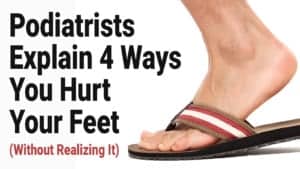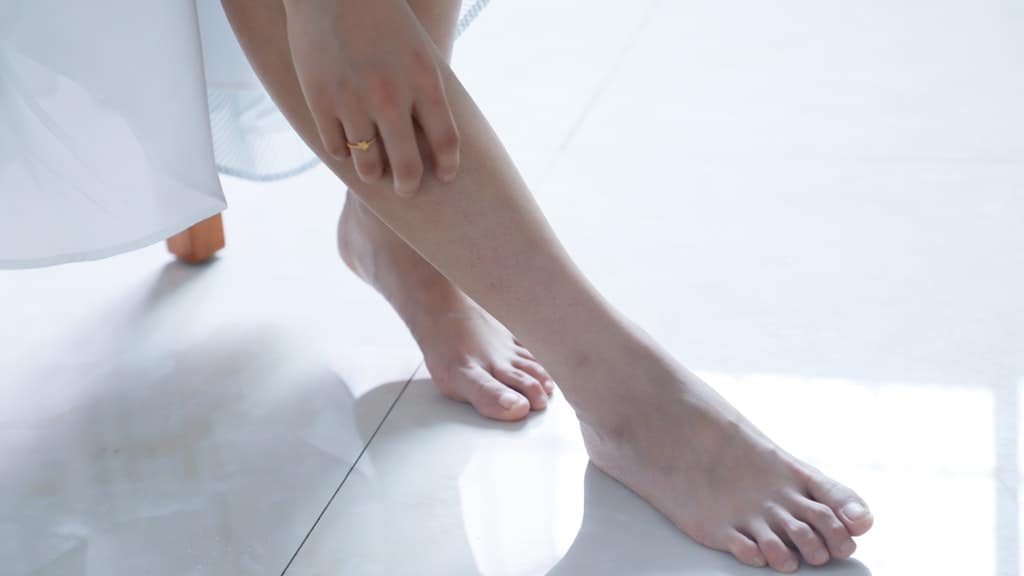Plantar Fasciitis is a common condition that affects both avid athletes and the average person. While most of us never give a second thought to the health of our soles, the reality is that many of us are a few missteps away from experiencing this condition in your heels.
Plantar Fasciitis vs. Heel Spurs
While issues with the plantar fascia are common amongst runners and other athletes, this is a condition that can affect anyone. Often called “runner’s heel, this common affliction causes pain in the sole of an individual’s foot. This condition is named for the plantar fascia, the tissue found where the sole attaches to the heel bone and develops as a result of running, walking, or similar activities that aggravate the plantar fascia.
As this condition can be particularly distressing, it is often confused with a common symptom known as heel spurs. While a heel spur can occur as a result of issues with the plantar fascia, they often develop on their own, independently of this condition.
These spurs occur as a result of calcium deposits growing between one’s the arch of your foot and your heel. The symptoms of heel spurs are quite similar to conditions affecting the plantar fascia, making it easy to confuse the two. Symptoms of a heel spur typically include a sharp pain during the morning, dull aching in the feet throughout the day, swelling and inflammation in the heel, radiating heat from your heel, a visible bone-like protrusion under one’s heel, and a point of tenderness towards the bottom of the heel. It’s best to consult a doctor to differentiate between issues with the plantar fascia and heel spurs.
Symptoms of Plantar Fasciitis
While pain in your feet can have a variety of causes, don’t rule out problems with your plantar fascia. If you’re concerned about the health of your feet, consider the following symptoms:
1. You Feel Early Morning Pain
One of the most telling signs of this condition is feeling pain in the early morning. This common sign of this condition starts with a sharp pain as soon as you wake up.
This aching or throbbing pain begins in the foot and often called “first-step pain.” During the night, you’ll likely feel some relief from being on your feet throughout the day. However, when you first get moving again in the morning, you’ll be revisited by the agonizing pain of this condition. The pain in your heels will begin again after long periods of being stationary after sleeping, sitting at a desk, or watching a movie.
2. You’re Experiencing Foot Pain Throughout the Day
Most individuals with this condition will experience pain during the early morning. However, a hallmark symptom of this condition is that the pain won’t subside throughout the day.
Though the morning will bring an onset of new pain, this condition will eventually heal. The pain will lessen over time, but it’s essential to seek treatment for your plantar fascia to make sure your feet heal properly.
3. Your Knees Are in Pain
Though many associate this condition with pain in the feet, this isn’t the only place that you’ll experience pain. Beyond the pain you may be experiencing in your feet, consider your knees as well. After experiencing consistent pain throughout your feet, you may begin to walk differently to accommodate the pain you’re experiencing. With a change in your gait, you may inadvertently put yourself in even more pain.
This condition can cause you to add pressure to your knees as you walk incorrectly to alleviate the pain in your feet. This incorrect gait will eventually lead to knee pain, resulting in achy knees from the rest of the day.
4. Your Hips and Back Hurt
In addition to the pain felt in your feet and your knees, you may experience pain in the rest of your body as well. With bad knees and a poor gait, your plantar fasciitis can easily lead to pain in your lower back and hips. Though the condition may be the root of the issue, your other pain will soon become an overwhelming issue as well.
5. You Have Trouble Walking Due to Painful Feet
Another clear symptom of this condition is the pain you’ll experience when walking. If you’ve frequently felt pain in your feet and often experience issues when walking, you’re likely experiencing symptoms of this condition. Until you’ve been adequately treated, avoid walking for long periods as this will only aggravate the pain you’re feeling.
The best approach to take at this time is to spend as little time on your feet as possible. Doctors share that taking care to walk in small doses is one of the more effective ways to heal plantar fasciitis. This
6. You Feel Pain After Physical Activity
Though there are specific times in the day that the pain from this condition will be more pronounced, these symptoms can be felt at other times as well. This condition may present itself following long periods spent exercising, walking, or standing.
While you may not realize this pain is related to your condition, any tears in your plantar fascia will result in a painful experience during whatever activity you are performing.
7. You Have Tenderness in the Heel
Tenderness is another common symptom associated with this type of condition. In addition to any sharp pain that you’ll feel in your toes or heels, you’ll likely experience swelling or tenderness in the area as well.
This tenderness is often felt in the heel area and will typically be warm to the touch. If you’re feeling any tenderness in this area, it’s time to contact a medical professional to address your current condition.
8. You’re in Pain After Climbing the Stairs
It’s clear that standing and walking on your feet can easily aggravate the plantar fascia. While it won’t be clear that you have this condition if you feel pain during such activities, pain after climbing the stairs is often a result of having issues with one’s plantar fascia.
9. You Feel Extra Stress on Your Feet When Walking
Depending on the shape of your feet and the way you walk, some you may be more prone to experiencing this condition than others. High arches and flat feet are two factors that can significantly impact whether or not an individual will experience this condition. These factors will affect the way each foot bears your weight, putting extra stress on the plantar fascia in your feet.
10. You Experience Pain Towards the Bottom of Your Feet
Though heel pain is commonly associated with this condition, this isn’t the only symptom. Pain towards the bottom of one’s foot is another result of problems with the plantar fascia. The pain felt with plantar fasciitis can also occur where the heel and the arch of the foot meet or anywhere on around the sole of your feet.
To determine whether or not the pain you’re feeling in your feet is indicative of this condition, it’s essential to consult with a doctor to properly asses your problems. A doctor will observe your range of motion and examine any pain and inflammation to arrive at a diagnosis. In some cases, a doctor will also perform an x-ray as well to eliminate the likelihood of a stress fracture.
11. You Developed Heel Spurs
A heel spur can develop in various areas of the feet as a result of stress. This bone-like growth develops at the point in which the plantar fascia and the heel bone attach and is a sign of abnormal tension in the foot structure and your plantar fascia. If you’re experiencing pain in your heels or at the bottom of the feet as a result of heel spurs, you may likely have a problem with your plantar fascia.
Though individuals with heel spurs may experience pain, the spurs can work in tandem with other heel pain. These spurs can shape up either hooked or pointy. This outgrowth of heel spurs extends from beneath the heel toward the arch of the foot.
Though many people with plantar fasciitis have a heel spur, they can be separate conditions. This condition will increase an individual’s risk of getting a heel spur. Besides, they often occur in an individual that already has this condition. Thus, if you’ve discovered you have a heel spur, it is quite likely you have this a problem with your plantar fascia as well.
12. You Experience Difficulty Running
While certain, sharp pain may be a tell-tale sign of this condition, many avid runners miss the earlier signs and symptoms. While this condition is common in runners, few people connect the dots between the pain in their feet and this type of situation.
Often, runners will experience difficulty or pain, but continue to run anyway. Should you continue to do this without first treating the condition, you’ll only aggravate your plantar fascia.
Doctors typically recommend reducing the strain on one’s plantar fascia by reducing activities like running or walking barefoot. Additionally, taping the plantar fascia is a conventional treatment for this condition. If you’re experiencing significant pain before or after a run, be sure to contact a medical professional to assess your situation.
 Final Thoughts on Recognizing Plantar Fasciitis
Final Thoughts on Recognizing Plantar Fasciitis
Don’t make the mistake of ignoring the pain in your heels. If the plantar fascia in your feet is affected, it won’t be long before these other symptoms take hold as well.
Promote positive health practices by keeping an eye out for the aforementioned symptoms. By carefully monitoring the health of your feet, you’ll be better able to enjoy a healthy and happy future overall.

















